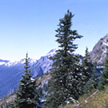| Report Documents
|
|
|
| |
| Map Plotfiles
|
-
No files of this type available
|
| |
| Data Files
|
-
No files of this type available
|
| |
| Digital Map Files
|
-
No files of this type available
|
| |
| Image Document
|
-
No files of this type available
|
| |
| Video Files
|
-
No files of this type available
|
| |
|
All Documents
|
|
|
| Contact
|
|
-
If you have any questions on the information presented, or require additional report data or attachments, please contact the Report Contact
|
|
|
Plants, as well as lichens and fungi, have been an integral part of the ecology and culture of Tsay Keh Dene Nation (TKDN) since time immemorial. Climate change, anthropogenic activities, and natural disturbances pose risks to northern flora, including medicinal and cultural plants. The creation of the Williston Reservoir flooded the Rocky Mountain Trench, including areas used for subsistence by TKD for medicine gathering and berry picking.
|
Author: Collis, Brianna
|
Old Reference Number: PEA-F23-W-3649
|
Old Reference System: FWCP - Fish Wildlife Compensation Program Peace
|
Date Published: Apr 2023
|
Report ID: 62382
|
Audience: Government and Public
|
Further, the reservoir has become a transport route, permitting the economic harvest of previously inaccessible forested areas. Many natural areas have been impacted by forest fires, pine beetle kill, and the associated salvage harvests. These factors, combined with the aging of TKD elders and botanical knowledge holders, creates an urgency to gather and formally document important cultural botanical information before important habitats, flora, and TKD knowledge held by individuals, is lost.
The study area is TKDN territory, located within the Finlay Arm Watershed. The community engagement occurred in the village of Tsay Keh Dene, British Columbia, located at the northernmost tip of the Williston Reservoir in northern British Columbia, Canada (56.902, -124.953). To date, there have been several comprehensive surveys for vegetation in the territory (e.g., baseline studies for Kemess Mine, FWCP Wetland Surveys for Predictive Ecosystem Mapping); however, these occurred in a small subset of ecosystem types and there has been no concerted effort to organize and collect botanical data for community purposes in the territory, including to retain Indigenous Knowledge and collect specimens for long-term data and educational use. However, botanical data are collected in the territory as a component of many projects, for example baseline studies for mineral exploration projects. This is an opportunity. The botanical data collected during these projects could become an important input to a community managed herbarium.
|
Report Type
Subject
| |
Region - Peace |
| |
Vegetation - Plant Ecology |
| |
|
|
